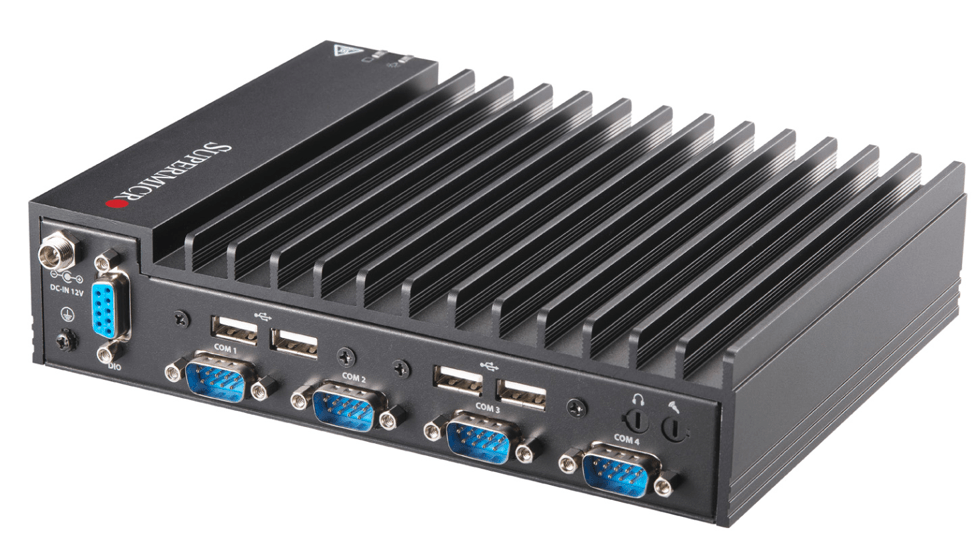Bring Intelligence to the Edge for a Smarter Factory
A series of trends are clashing on the factory floor. Decades old—but still functional—industrial machines are living alongside ultra-smart, state-of-the-art, Internet-based machines. Digital technology and mechanical systems must share data, even though they don't communicate. The factory, once the purview of operations management alone, requires IT to juggle mountains of data, decrease costs, and enable real-time decision-making.
At the crossroads of these trends, IoT gateways are stepping in to maximize the efficiency of diverse physical industrial assets, enabling resulting data to be acted on where it's produced.
IoT Gateways—The Basis of Smart Manufacturing
Until recently, manufacturing processes were relegated to the factory floor while business processes and connection to the cloud were functions of IT. Security was the primary motivation for the separation of the two environments. In addition, a lack of compatibility between the two systems, as well as a complete different management philosophy and skill set made their segregation easy. Industrial automation relies on a real-time, deterministic approach, while business processes tend to be slower.
Now, IoT implementation is setting the stage for an effective integration of the enterprise with smart manufacturing. This combination yields enhanced cost control, supply chain management, prediction accuracy, energy savings, predictive maintenance, and risk mitigation. As machines and systems are networked to communicate with one another, they become a highly intelligent structure that maximizes throughput, quality, and efficiency.
IoT gateways aggregate sensor data, provide translation among sensor protocols, and process the sensor data. Gateways also provide the secure channel necessary for safe transmission of data over IP to the cloud or the industrial data center and back.
For devices unable to connect to the Internet on their own, IoT gateways provide that access and communication. They support multiple I/O interfaces inherent in manufacturing, tapping into data produced by equipment and the supply chain. The result is better control of manufacturing processes and reduced costs.
As production is increasingly networked, the physical flow of materials is integrating with the flow of information. Connected machines, people, and systems are empowering real-time and intelligence-based decision-making at every level in the factory. The ability to gather and use readily available data is resulting in increased product quality and streamlined operations. By eliminating the disconnect in how information flows, the factory has never been so smart.
When implementing IoT gateways, it's important to note that each customer has its own set of requirements. Adding intelligence to industrial settings often becomes a matter of customization. While there are many gateway providers, finding one with the depth of understanding matched by an end-to-end portfolio just got easier.
Supermicro Bridges the Gap
Supermicro, known for high-performance and high-efficiency server technology, delivers a universal hardware platform that bridges the gap between the edge and the cloud. Supermicro edge devices (Figure 1) support a variety of industrial communication protocols and offer flexible configurations, enabling manufacturers to set up a field network.

The compact IoT gateways—based on Intel® technology—are smart and secure. They reside on the edge of the network, connecting data-rich smart sensors and devices to the cloud over wireless or local networks (LAN, WiFi, 3G, Zigbee, RF).
Supermicro IoT gateways provide complete edge-to-cloud solutions. Using a building-block approach, they can build and deliver application-optimized solutions that put customer requirements at the forefront. By taking advantage of the flexibility and scalability of Intel® processors and architecture, customers can rapidly deploy this infrastructure across many smart factory applications.
IoT gateway solutions are tipping the proverbial scale to a rapidly evolving IT-centric approach that’s critical in bringing true intelligence to today's manufacturing.
An Intelligence Edge
Edge computing and the IoT are transforming the landscape of manufacturing. Being able to analyze and act on data produced on-site without first having to send it to a remote datacenter allows for smarter and faster decision-making. By using the benefits of IoT gateways, manufacturers can gain a competitive advantage.